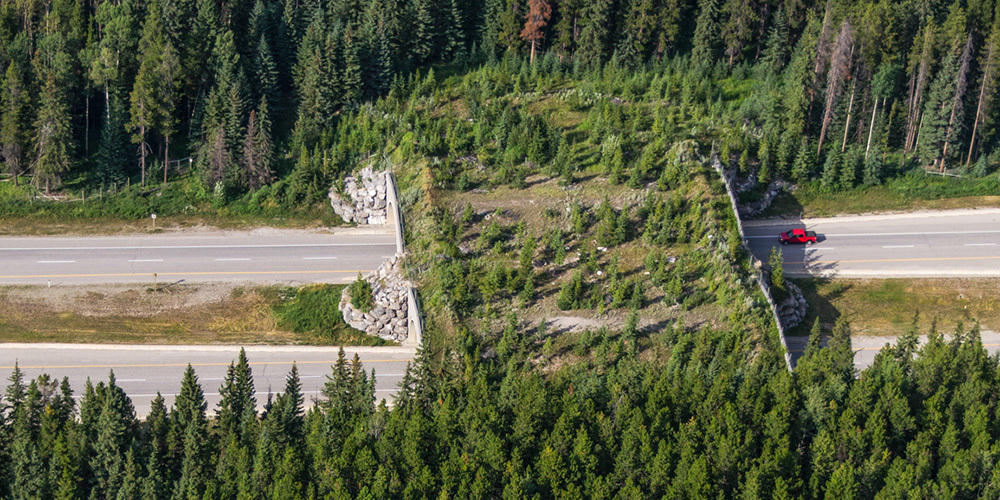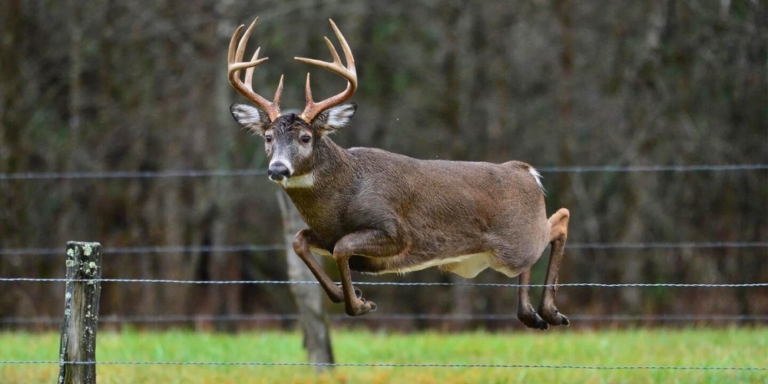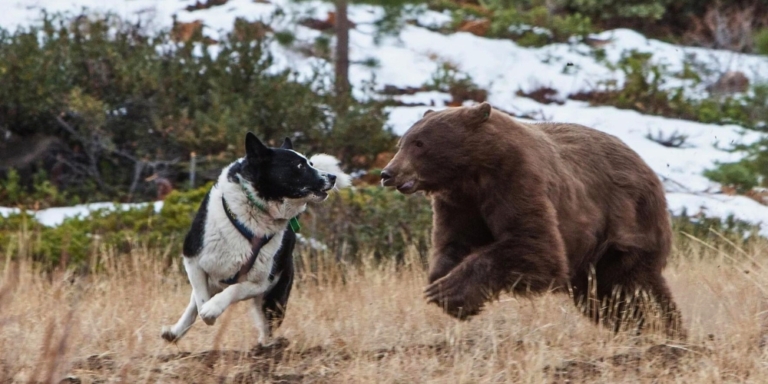Who knew that crosswalks would be an idea that would save thousands of lives?
Unless you are a city planner, you probably don’t think about how the installation of crosswalks helps prevent collisions between cars and pedestrians.
Well, “crosswalks” for wildlife in Banff National Park have been doing the same for over 25 years.
The busy Trans-Canada Highway winds through the Park, and animals have been getting killed in collisions for years. In the late 80’s, Parks Canada started fencing off the Trans Canada Highway to keep animals off the road.
An Innovative Idea
A groundbreaking initiative was launched in the 1990s to address the problem created by fencing: the restriction of wildlife movement and migration. This initiative was the Banff Wildlife Crossings Project.
The objective was clear – to ensure the safety of both motorists and animals while letting wildlife move across the highway. The solution was innovative – constructing wildlife crossings over and under the road.
From a distance, these crossings seem like ordinary highway infrastructure.
But a closer look reveals their true purpose. The overpasses, covered in grass, trees, and wildflowers, provide a natural pathway for animals, shielded from the bustling traffic below. The previously installed fencing ensures that animals are guided toward safe passages and kept away from the dangers of the road.
On the other hand, the underpasses offer a more concealed route, preferred by species like black bears and mountain lions. These shadowy tunnels, camouflaged within the park’s landscape, provide a safe and discreet passage for animals that prefer the cover of darkness.
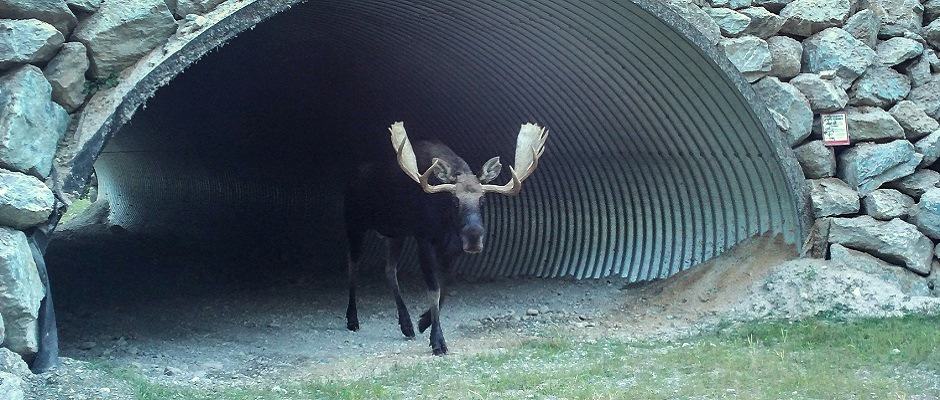
Results Beyond Expectations!
The project has had excellent results since it launched in the 1990s. With the construction of 38 underpasses and six overpasses, wildlife-vehicle collisions have plummeted by over 80%. For certain species like elk and deer, the reduction is an astounding 96%.
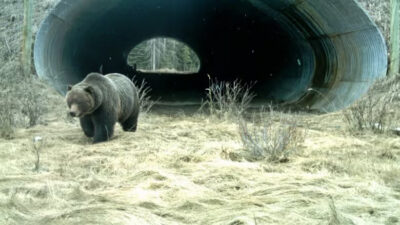
But the success of the Banff Wildlife Crossings is more than just in the numbers. It’s in the stories of individual animals. Grizzly bears, lynx, wolverines, wolves, and even unexpected visitors like red foxes and boreal toads have been documented with wildlife cameras using these crossings. Curious and bold, Elk began using the structures while the overpasses were still under construction!
The crossings also play a crucial role in preserving the genetic diversity of wildlife populations. By reconnecting habitats fragmented by the highway, they ensure that different groups of the same species can interact, mate, and ensure the genetic health of future generations.
The world has taken notice.
Banff’s pioneering efforts in road ecology have inspired nations globally. Scientists from as far as Mongolia, Argentina, and China have visited Banff, eager to learn and replicate its success. Whether it’s designing crossings for tigers in Asia, howler monkeys in Costa Rica, or jaguars in Argentina, the Banff model is a beacon of hope.
Challenges Remain.
While the threat from cars on the highway has lessened, the Canadian Pacific Railway that cuts through the park presents a constant danger because there are no wildlife crossings for the railroad tracks.
There continue to be collisions between trains and wildlife, including a grizzly bear mom and her cub in 2021. Collaborative efforts between Parks Canada and CP Rail are underway to understand and address this issue.
The wildlife crossings of Banff stand as a testament to what can be achieved when engineering meets conservation.
They remind us that with innovation, collaboration, and a commitment to coexistence, we can pave the way for a harmonious future where both humans and animals can thrive.

